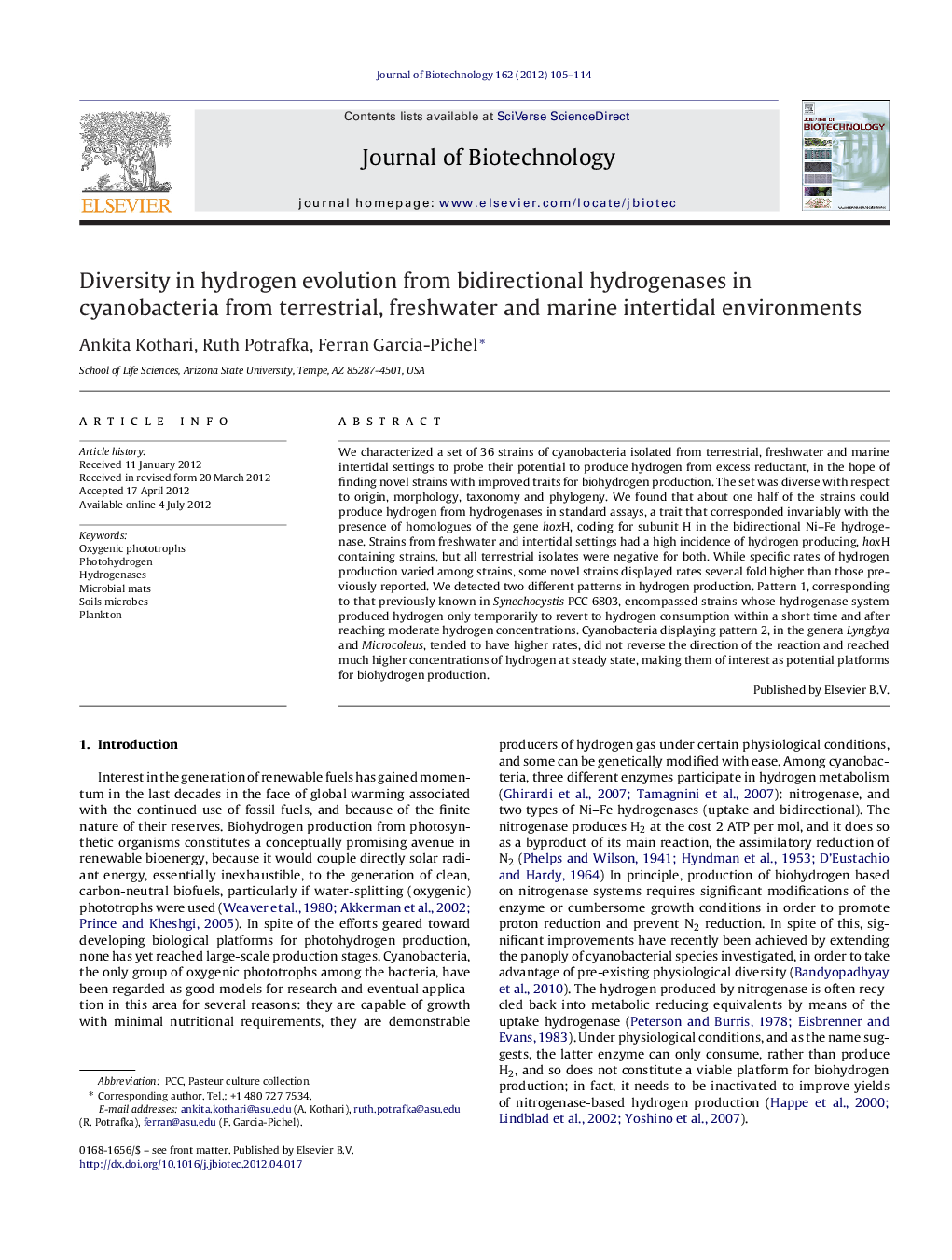| Article ID | Journal | Published Year | Pages | File Type |
|---|---|---|---|---|
| 23657 | Journal of Biotechnology | 2012 | 10 Pages |
We characterized a set of 36 strains of cyanobacteria isolated from terrestrial, freshwater and marine intertidal settings to probe their potential to produce hydrogen from excess reductant, in the hope of finding novel strains with improved traits for biohydrogen production. The set was diverse with respect to origin, morphology, taxonomy and phylogeny. We found that about one half of the strains could produce hydrogen from hydrogenases in standard assays, a trait that corresponded invariably with the presence of homologues of the gene hoxH, coding for subunit H in the bidirectional Ni–Fe hydrogenase. Strains from freshwater and intertidal settings had a high incidence of hydrogen producing, hoxH containing strains, but all terrestrial isolates were negative for both. While specific rates of hydrogen production varied among strains, some novel strains displayed rates several fold higher than those previously reported. We detected two different patterns in hydrogen production. Pattern 1, corresponding to that previously known in Synechocystis PCC 6803, encompassed strains whose hydrogenase system produced hydrogen only temporarily to revert to hydrogen consumption within a short time and after reaching moderate hydrogen concentrations. Cyanobacteria displaying pattern 2, in the genera Lyngbya and Microcoleus, tended to have higher rates, did not reverse the direction of the reaction and reached much higher concentrations of hydrogen at steady state, making them of interest as potential platforms for biohydrogen production.
► In surveying a set of newly isolated strains of cyanobacteria, we found that about 50% could produced hydrogen using hydrogenases. ► This correlated with the presence of hoxH (bidirectional Ni–Fe type) genes. ► Freshwater and marine intertidal strains were commonly positives, but all strains of terrestrial origin were negative. ► Some cyanobacteria in the survey had specific rates of hydrogen production several fold faster than those previously reported. ► Cyanobacteria from the intertidal marine displayed a new mode of hydrogen production characterized by high rates, lack of reversal and high steady state concentrations that makes them interesting as a potential biohydrogen platform.
